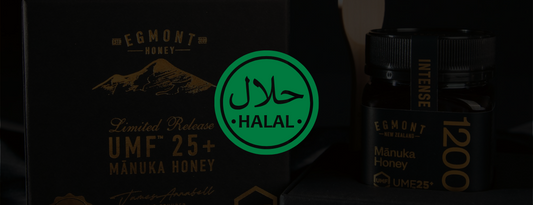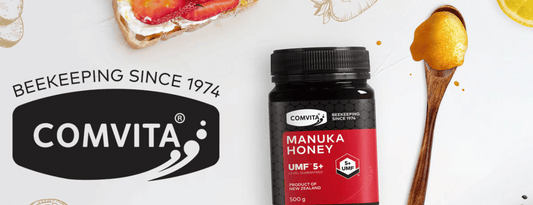Comvita’s Origin Story - Introduction
Comvita’s story begins with what the company often describes as a beekeeper’s dream. In 1974, that vision grew into one of the world’s most recognised names in certified New Zealand Manuka honey. The founders, Claude Stratford and Alan Bougen, combined a shared passion for bees, natural health, and community wellbeing to create a business grounded in honesty, transparency, and quality. If you are exploring products after reading this history, you can browse the Comvita range at Manuka Hut for certified New Zealand Manuka honey.
This is more than the tale of two beekeepers. It also reflects the evolution of New Zealand’s natural health industry, the rise of Manuka honey as a globally sought after product, and the values that continue to define Comvita today.
Comvita’s Origin Story - Table of Contents
The Beekeeping Landscape in New Zealand Before Comvita
In the early to mid twentieth century, beekeeping in New Zealand was a small scale, largely rural enterprise. Honey was a staple food and a source of income for many families, though it had not yet achieved a premium health halo in international markets. The Manuka plant was often treated as scrub that farmers cleared to create pasture. That perception shifted as research and consumer awareness grew.
By the 1960s, interest in natural health was rising. Small producers experimented with native botanicals and traditional remedies. Health food stores began to stock unprocessed honey and herbal products. This cultural moment created favourable conditions for a values driven company to emerge. It set a foundation for Comvita’s future, where authenticity, provenance, and careful production could stand out.
Buy Comvita on Manuka Hut
Roots Before the Brand: Claude Stratford’s Lifelong Connection to Bees
Claude Stratford’s relationship with bees goes back to childhood. In 1916, at six years old, he began keeping bees on his family’s South Island farm. By his teenage years, he was cycling into town to sell comb honey. These formative experiences gave him a practical understanding of hive health and a deep respect for the rhythms of nature.
Claude’s interest in natural health extended beyond honey. Over the decades he developed herbal formulations and remained hands on with production. Even in his 90s he was active in the business and community, a point reflected in the company’s beekeeping features.

Alan Bougen’s Path to Natural Health
Alan Bougen came to beekeeping from a different direction. In the early 1970s he travelled through Africa, Europe, and North America, exploring simple living, whole foods, and wellness. He encountered raw honey in North American health food stores and was struck by how it was positioned as a complete, natural food. Elements of this journey appear in a fifty year reflection.
A story repeated in company heritage material describes Alan applying Manuka honey to a horse’s wound and observing healing. While framed as brand storytelling, it illustrates the curiosity that pushed him to explore honey beyond the kitchen.

A Meeting of Minds
When Alan contacted Claude for advice, they quickly discovered a shared philosophy. Claude brought decades of technical knowledge and a calm respect for nature. Alan brought vision, energy, and a keen sense of emerging consumer interest in natural products. Despite a 40 year age gap, they agreed on first principles. Make products honestly. Protect quality at every step. Treat bees and the environment with care.
That alignment gave them confidence to formalise their work. It also helped set a tone that remained consistent as the company grew. Early success was not only product differentiation. It was also the trust built through clear values and dependable standards.
Turning a Dream into a Brand: Founding Comvita
Comvita was founded in Paengaroa, a rural town in the Bay of Plenty. The name is derived from Latin and is commonly explained as “with life and vitality”, an intention to support wellbeing with natural products.
The early operation was modest and hands on. Production started in Claude’s basement using a hand operated extractor and a steam heated knife. The first products included Manuka honey, bee pollen, propolis tinctures, herbal cough syrups, and natural skin creams, as recorded in a historical summary. The scale was small, which allowed tight control of quality and a reputation built through personal relationships.

Building a Reputation for Purity and Ethics
From the beginning, the focus was purity and straight communication. The company positioned itself as a responsible custodian of the natural environment and a careful producer. Local customers responded to reliable supply and clear labelling. Word of mouth moved the brand from a basement setup to a purpose built facility.
Comvita also invested in native planting initiatives around its Paengaroa site to improve bee forage and restore biodiversity.
Pioneering the UMF™ Standard
As Manuka honey gained international attention, questions about authenticity became more pressing. The industry needed a clear, independent way to differentiate genuine Manuka honey from lookalikes. Comvita participated in establishing the UMF™ Honey Association, which created the Unique Manuka Factor grading system. A plain language explanation is provided in the company’s UMF overview.
UMF™ verifies key natural compounds that are characteristic of Manuka honey. The commonly referenced markers are leptosperin, dihydroxyacetone, and methylglyoxal. Independent laboratories test for these markers and confirm that the honey matches its label. If you'd like to know more about UMF, you can read our article here.
Buy Comvita on Manuka Hut
The Science Behind Manuka Honey
Scientific interest in Manuka honey’s properties grew from the 1980s onward. Researchers studied antibacterial activity and the stability of certain effects under heat and light. These findings helped explain why Manuka honey behaved differently from many other honeys. Although research continues to evolve, the outcome was a stronger foundation for a product that already had community support in New Zealand.
Comvita invested in quality control and research partnerships to keep pace with demand and regulatory expectations. Communications emphasised batch testing and traceability, which helped the brand gain traction with pharmacists, natural health practitioners, and retailers who wanted confidence in what they were stocking.
Global Growth and International Recognition
By the 1980s, Comvita was exporting to Australia and parts of Asia. Distribution later expanded to Europe, North America, and the Middle East. Growth required attention to differing labelling standards and food regulations. The company positioned itself as a New Zealand brand that combined traditional beekeeping with evidence based quality controls.
Comvita supplied safe New Zealand honey to certain markets after the Chernobyl disaster in 1986. New Zealand was well outside the affected zone, which gave importers confidence in product safety. The anecdote illustrates how provenance can matter during times of uncertainty, and how distance from industrial fallout can become a competitive advantage.
Sustainability and the Harmony Plan
The Harmony Plan sets a framework for biodiversity restoration, carbon reduction, and community engagement. The company reports planting millions of Manuka seedlings with partners over many years and estimates significant carbon sequestration from Manuka forests.
Protection of pollinators is central to this approach. The company undertakes swarm recovery where appropriate and focuses on hive health, seasonal nutrition, and breeding practices that support resilient colonies. Selected collaborations with Indigenous communities on biodiversity projects align with a broader stewardship mindset that has been present since the early days.
Quality, Traceability, and Consumer Trust
Beyond science and sustainability, systems were built to give customers clear information. Batch codes track honey from hive to shelf. Labels explain UMF™ grades in plain language so buyers can match products to their needs. Education content frames Manuka honey as a natural food that benefits from careful handling, responsible harvesting, and rigorous testing. These elements reinforce trust and reduce confusion in a category that can feel complex to first time buyers.
Retail partners took that message beyond New Zealand. Pharmacists and health store staff valued a simple explanation for a product with both tradition and laboratory validation. As the category matured, the company continued to support education while maintaining standards during periods of intense demand and media attention.

Community and Education
Outreach includes visitor experiences and educational content that introduce people to the craft of beekeeping and the specifics of Manuka honey. These programs aim to show how environmental conditions shape quality. By giving consumers a window into the process, the brand helps people understand what the UMF™ mark represents and why traceability matters. This transparency complements sustainability messaging and supports informed purchasing decisions.
Education also supports long term stewardship. When people know how bees interact with native flora, they are more likely to support habitat restoration and responsible land management. This feedback loop between product education and environmental action reflects a wider shift in how food brands communicate value.
Continuing the Legacy
Claude Stratford remained involved well into his 90s and passed away at nearly 103 years old. Alan Bougen has continued to advocate for natural health supported by good science. Their legacy is visible in the ongoing emphasis on product authenticity, environmental care, and clear communication. Readers can explore more about the early years, the founders, and the brand’s growth within heritage materials and other regional histories.
Endurance rests on consistent principles. Protect quality. Test and verify. Respect bees and landscapes. Share knowledge openly. These ideas defined the small scale beginnings and remain relevant as the company serves customers across the world.
Conclusion
From a small basement operation in Paengaroa to a global presence in certified New Zealand Manuka honey, the story has been shaped by honesty, transparency, and quality. The origin features two founders who treated nature with care and insisted on standards that consumers could trust.
Growth has been supported by science, stewardship, and a clear sense of purpose. If you would like to see current products that reflect this heritage, visit the Comvita collection at Manuka Hut, where you will find certified options with straightforward UMF™ grading and batch traceability.
If you’re looking to explore more about Manuka honey, check out these resources:
Frequently Asked Questions
What does UMF™ mean on Comvita Manuka honey?
UMF™ stands for Unique Manuka Factor. It is an independent quality mark that measures the natural markers found only in genuine New Zealand Manuka honey, including leptosperin, DHA, and methylglyoxal. It guarantees the honey’s authenticity, purity, and potency.
Where is Comvita Manuka honey produced?
Comvita sources its Manuka honey from beehives located in remote regions of New Zealand, where the Manuka bush grows naturally. The honey is harvested, tested, and packed in New Zealand to maintain full hive-to-shelf traceability.
How is Comvita committed to sustainability?
Comvita operates under its Harmony Plan, which focuses on protecting bees, restoring ecosystems, and reducing carbon emissions. The company reports planting millions of Manuka seedlings and running programs that support bee health, along with selective biodiversity projects with Indigenous partners.
Why is Comvita’s origin story important to its brand today?
The partnership between Claude Stratford and Alan Bougen in 1974 was built on shared values of honesty, quality, and care for nature. These principles continue to guide Comvita’s decisions, from how it sources honey to how it engages with customers and the environment.





